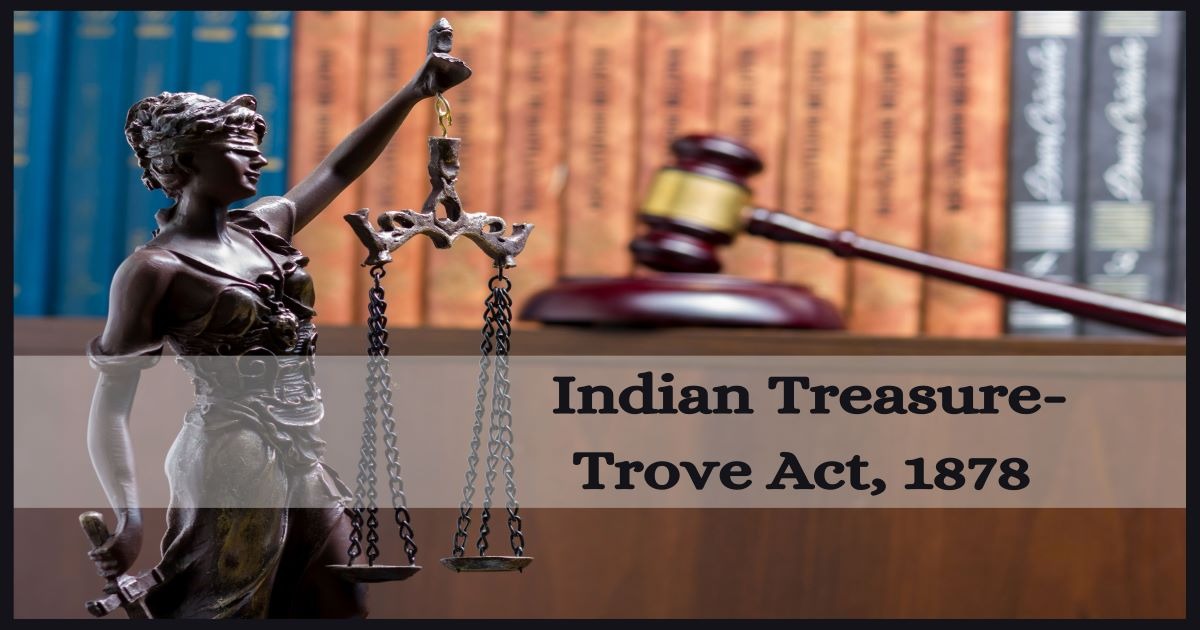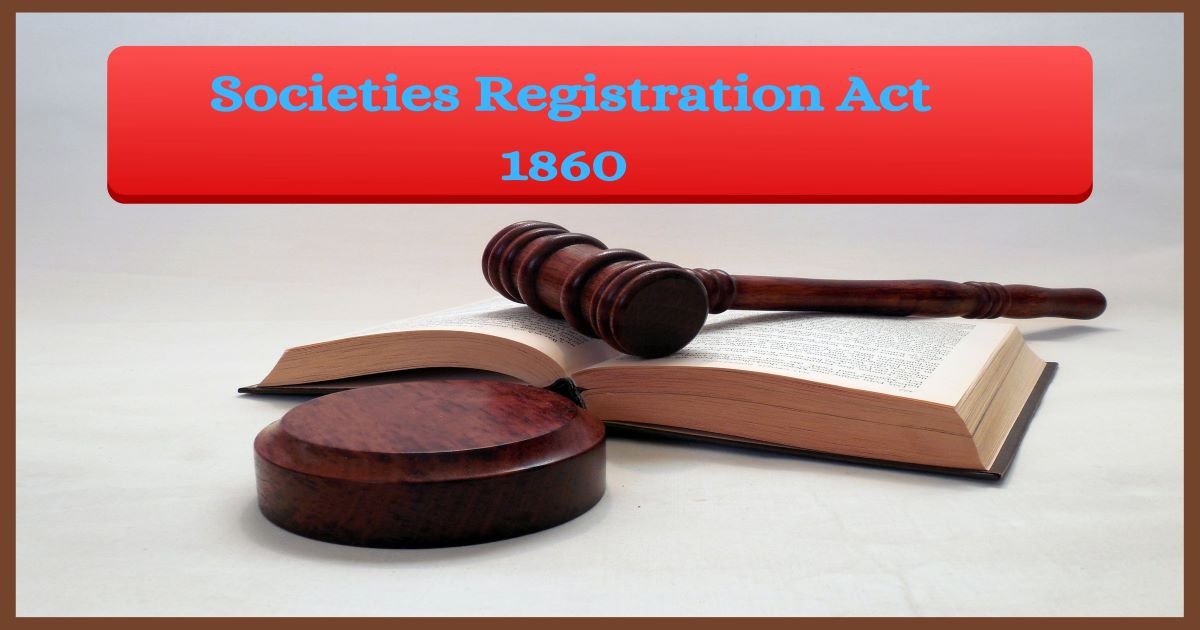
Property registration in India is governed by the Registration Act of 1908. Registration of property requires submission of some documents, payment of fees and stamp duty, and signing of documents by the seller and the purchaser.
In India, there is a law in force regarding immovable property and its transfer. There is an Act known as the Registration Act, 1908. According to this Act, any transaction having the sales proceeds of Rs 100 has to be registered. So, practically registration is a must wherever there are a sale and purchase of property or transfer of property. There is a provision for Penalty For Late Registration Of Property.
What is the Act?
Property is categorized into two types in Indian law: movable as well as immovable. The 1882 Transfer of Property Act (TPA), which took effect on July 1, 1882, governs the transfer of ownership between living persons. The TPA is an outgrowth of the contract law that lies close to the succession laws. It is one of the oldest statues in the Indian legal system. Knowing the major features of this Act is critical for people wishing to exchange their immovable property.
Transfer of Property Act Main Provisions is a by-product of contract law, which is closely related to succession rules. It is among the Indian legal system’s earliest legislation. It is important for people who want to transfer their immovable property to understand the key elements of this Act. Hindus and Muslims were controlled by their particular laws for the transfer of ownership before the arrival of the British Raj regime in India. When Britishers became engaged in the Indian law, they formed informal courts where there was no distinct and tangible law, as opposed to the law in England.
Several High Courts have stated that particular actions relating to property transfers are required. The privy council observed the ambiguities and ordered the authorities to take urgent action since the idea of a decent conscience, justice, as well as equity was perplexing and caused different uncertainties.
As a result, the British Queen Elizabeth II established the first commission to clear the air. When it comes to property transfers, we have got you covered. After some modifications were proposed in the legislative Council in 1877, the document was submitted to India. It was then forwarded to the selection committee, but owing to public outcry, it was rescinded.
History of the Transfer Of Property Act 1882
The Second Law Commission revised the bill. Some of the laws were adapted from the Law of Conveyancing as well as the Property Act, 1881, which governs real estate in England. The legislation was mostly written to fit the Indian populace and is simple enough for non-professional judges to understand.
Despite the Second Commission’s many modifications, the legislation grew more expansive. As a result, a special panel was formed to make the necessary changes to the existing legislation. Several changes to the legislation were enacted to broaden its reach and remedy existing flaws.
Highlighted things in the Act: Transfer of Property Act Main Provisions
The immovable property offers land, advantages flowing from the land, objects linked to the land, and the General Clauses Act of 1897. Immovable property can be characterized as all property that is not standing wood, crop cultivation, or grass in the context of property transfer. Large artillery was set up to explode liquor on this occasion. If it was fixed in the land but not to benefit from it, the Court decided it was moveable property.
Mortgage debt was exempt from act guarantees with the amendment of 1900. Wallis C.J. managed to hold in Peruma animal vs. Peruma Naicker that lending debts could be transmitted as act guarantees before 1900. They were excluded first from actionable claims because the legislature designed that the personal debt is transmitted in the mortgagee’s intrigue through a generally referred instrument.
The 1882 instrument is a non-testamentary document, as per the Transfer of Property Act. It serves as proof of a property transfer between existing partners. An instrument is a formal, legally binding document, as per the legal terminology. It is an official process that is signed by witnesses. The executants are the people who transfer the property. In 1926, the amendment legislation was passed, stating that two or even more observers must sign the agreement in the view of the executive, not usually at the very same time, and they are not parties to the transfer.
As per the 1882 Transfer of Property Act, “recognized” refers to any property that has been registered in the state where the action is in effect. Various registration processes must be followed.
- The property’s characteristics should be given.
- Avoid being a victim of fraud.
- A reasonable candidate should present the deeds.
- The property has to be listed in the same jurisdiction as the registered office.
A claim to any obligation other than a constraint by an exemption mortgage, a moveable property having a solid picture or pledge, or a beneficial interest in a movable or a development meaningful in property acquired not in the ownership. Whether such obligation or beneficial interest is existing, accusing, conditional, or prospective, the civil courts regard either actual or constructive ownership of the claimant as providing grounds for relief.
Procedure for property registration
Property Registration Documents related to the property should be submitted to the office of the Sub-Registrar who is authorized to register the property. The Seller and the Purchaser have to be present during the registration of the property. For a piece of land, there is a land registration process and for a house, there is a House Registration Process. Wherever there is a registration of property, the Land Registration Process In India and its associated rules are followed. For the registration of a flat, Documents Required For Registration Of Flat should be submitted in the Sub-Registrar’s office. If there is a representative of either the seller or the purchaser present in absence of the concerned persons, a power of attorney should be submitted. A power of attorney is a document of authorization.
You are supposed to produce the original documents with proof of payment of stamp duty to the sub-registrar. The property will not be registered in absence of any of the required documents. Witnesses are also required to be present during the signing of the registration papers.
Documents required for property registration are mentioned below:
- Aadhar card.
- Passport-size of both seller and purchaser.
- Copy of the original sale deed that has been verified.
- Copy of NOC according to the land ceiling Act.
- Copy of the latest property register card.
- Copy of Municipal tax bill.
- Construction completion certificate.
- Paper of agreement between the seller and the original purchaser.
Time limit, fees for property registration
The documents to be registered must be presented in four months starting from the registration date. The required fees should also be deposited along with the documents. In case there is a delay in the production and submission of documents, the applier may pray for an extension, but there will be a fine for the delay @ 10-times the amount of the registration fees. The registration fee is 1% of the total value of property subject to a maximum of Rs 30, 000. Today in 2020, the rules of return of documents to the parties have changed. Previously, the documents were returned after 4 months, but today, due to the computerization, the copies of the documents are available on the same day. If a property is not registered, it cannot be produced in any court of law as a piece of evidence. Unregistered property has no legal validity. In case your property is acquired by the government, you won’t be entitled to compensation if the property has not been registered.
Calculation of stamp duty and registration fee
Different standards are used in different states for the calculation of stamp duty and registration fees. For multi-storeyed apartments, a super built-up area is considered for calculation. In case there is an independent house, the entire constructed area is considered for the calculation. For the plots of land, the sq ft area of the plot is multiplied by the existing guidelines of that area.
Stamp Duty Charges & Property Registration In India,2020
Stamp duty is a tax imposed by the government on the parties dealing in property transfer. It is charged by the central and state government. The purchasers must pay the stamp duty charges on the agreement of sales that falls under the Indian Stamp Act, 1899, section 3. Now the indirect taxes, sales tax, and value-added taxes are replaced by GST.
Stamp Duty charges differ upon state rules and the charge also varies depending on many other factors like:
- Property Status: Old or New
- Property Location: rural area, City area, etc.
- Owner’s age
- Owner’s gender
- Property utilization: Commercial or Residential
- Property type: Flat or house
HOW STAMP DUTY IS CALCULATED:
It differs from state to state. If you are looking to buy an apartment, you need to pay stamp duty at a certain percentage to the value of the property. In some states, it is 5%. You can pay stamp duty in cash, cheque, demand draft, pay the order, or NEFT transfer.
REGISTRATION
The documents should be registered according to the Registration Act of 1908. It should be done within 4 months from the execution date. It is done after stamp duty has been paid. The registration is done by the sub-registrar. If there is a delay in the payment of stamp duty, there is a penalty provision.
TIPS TO SAVE REGISTRATION CHARGES
You should register your property at the circle rate. It will be beneficial to the parties to the transfer of property. The seller can save on property gains tax. You should go for a home loan from a bank that covers most of the home purchase costs. Usually, stamp duty and registration fees are not included in the loan amount. You may look for a bank that provides you with a loan that covers these costs.
TIPS FOR THE REGISTRATION PROCESS
- Check for encumbrances with Sub-Registrar of Assurances Office:
You can do it by checking with the ownership status or title deed of the property. You should be sure if the property is mortgaged or not. The property should have been registered in the seller’s or the owner’s name. You should also check whether the property is transferable and heritable. The record for the past 30 years should be checked. The document should be issued by the Revenue Record Department. All dues like electricity bills, taxes, and water bills should be paid.
- Final drafting of the deed by the lawyer of the buyer:
The advocate of the buyer prepares the sale deed of the property. This document should be embossed on a legal paper that is in green in which the space for date and place should be left blank.
- Payment of stamp duty:
It is the buyer who pays the stamp duty with the respective bank or collection center that has been authorized. The stamp duty varies from one state to another. The value is calculated based on the property rate published by the Ready Reckoner of the government. The first page is marked by the bank by “stamp duty received”.
- Executing the final deed:
It is done in front of the purchaser, the seller, and the witnesses at the sub registrar’s office within whose jurisdiction the location of the property falls. A number is given for the document. The number is unique.
This document is given to a person called the reader in the Sub-Registrar office for scrutiny. He will indicate the required fees. The fee is 1% of the value of the transaction. The fee is paid to the cashier and a receipt is given in exchange.
Important Things to Know
A transfer of property has to take place between living or juristic persons. A juridical person, according to the court in Shiromanigurudwara Prabhakar committee, Sri Somnath Dass v. Amritsar (2000) can be an independent firm, corporation, society, organization, but not a union. This requirement would be met by someone who can sue and be sued. Property conveyance might take place in the present or even in the future. Nothing should be transferred until the title is issued. Several estates cannot be transferred, as per Section 6 of the 1882 Transfer of Property Act:
- The owner’s only right to re-entry, notwithstanding the breach of a later term, cannot be granted to anybody else.
- The right to use the easement cannot be transferred.
- The owner’s stake in the property, which is limited in its enjoyment, cannot be transmitted.
- Political benefits, public office, and a public officer’s income are all non-transferable.
- It is not possible to transfer a person’s right to sue.
- Military, naval, and air force stipends and political and civil pensions cannot be transferred.
- A transfer can’t be made against one’s natural interest, and if the object or payment is illegal, the transfer can’t be considered genuine.
- Tenants with an untransferable right of occupation, farmers whose estates have defaulted in paying revenue, and lessees whose estates are managed by the court of wards may assign their interests as tenant, farmers, or lessee.
For a legitimate transfer, the individual transferring the property must be of reasonable intelligence, not inebriated, a major, or not a person prohibited by law from signing a contract of transfer of property with yet another individual. Property transfers do not have to be in writing, but if there is a specific property to transfer, it must be in writing:
- And over a hundred rupees was spent on the sale of moveable items.
- The sale of intangibles must be done in writing.
- All debts with a value of more than a hundred rupees must be transferred in writing.
- A formal transfer of actionable claims is required.
- Immovable property is given as a gift.
- A lease of more than a year since immovable property.
Property Transfer To An Unborn Child
A property could be passed to an unborn child, and the individual transmitting the property’s interest must be over the age of 18. The property can be acquired under Section 25 of the 1882 Transfer of Property Act if the conditions are met. The transfer would be invalid if the condition became impracticable, prohibited by law, contrary to public opinion, or immoral.
Transfer Under Transfer Of Property Act 1882: What are the kinds of transfers?
In addition to the money, ownership is transferred from the buyer to the seller. The buyer receives physical property from the seller. The property is passed to the purchaser through a mortgage, which secures a loan by mortgaging the immovable property. To free the immovable property from the mortgages, the mortgagor must pay the principal debt plus interest.
There is no change of property in this situation; instead, possession of the property is passed from one object to another for a predetermined sum. An exchange of property occurs when two people decide to convey immovable property to each other. As per the 1882 Transfer of Property Act, a present is a violent or non-violent transfer of movable or immovable property from one person, the donor, to another person, which is acknowledged by and on the authority of the grantor.
Features
- The transfer of property Act’s introduction states that it is connected to the transfer of property even by the properties act.
- The 1882 Transfer of Property Act establishes a standard and unambiguous legal framework for the transfer of immovable property between living people through the act of participants.
- Indian Contract Act, 1872 was considered as an inexhaustive regulation, the Transfer of Property Act, 1882 was an expansion of it.
- The transfer of property legislation is not a carbon duplicate of the English transfer of property laws created in response to the country’s socio-economic realities.
- The 1882 Transfer of Property Act does not cover all aspects of the immovable property; nevertheless, it does cover the transfer of immovable property as a result of parties’ acts.
- Transfer of property is governed by the concurrent list, which gives both the state government and the parliamentary authority to make legislation on the issue.
- The legislation regulates five different forms of immovable property transfers: a) mortgages, b) gifts, c) sales, d) actionable claims and e) leases.
- Unlike personal laws, which vary from region to region, the Transfer of Property Act of 1882 is a statute that applies lex-loci to all individuals residing in that territory.
- Justice, equity, and moral conscience are among the principles that underlie the 1882 Transfer of Property Act.
- Because the states of Bombay, Punjab, as well as Delhi had their property laws at the time of adoption, the legislation didn’t apply to them at first. The transfer of property statute does not apply in Punjab at the moment; it is following the norm of good conscience and fairness.
- The 1882 Transfer of Property Act emphasizes the availability of inter-Vivos transfer in addition to the existing testamentary.
- Because the 1882 Transfer of Property Act is a legal framework, it cannot override specific legislation established by the legislature.
- Absolute conditional restriction on the transfer of property is void, but partial conditional restraint upon the transfer of property is legal, according to the Transfer of Property Act of 1882.
Conclusion:
The Act was established to create a comprehensive Act that gives information on the transfer in a very easy language. At the time of its introduction, it was not comprehensive and had several unknowns. It has gone through many modification procedures, and the legislation has proven its efficacy time and time again. Much additional legislation such as the 1882 Transfer of Property Act, needs to be enacted in India.
Also Read:
Property Registration Charges in Bangalore: Know Details
A Complete Guide to Property Registration in India
Q. What documents do I need for registering a property?
The documents that are required like PAN Card, Aadhaar Card, or any identity proof which has been given by the government authority should be carefully noted. The individuals also have to provide the power of authority, in case they are acting as proxy to someone else.
Q. What fee is to be paid for the property registration in India?
The registration fee for property documents is 1% of the value of the property, subject to a sum of Rs 30,000 maximum.
Q. What will happen if I fail to register a property?
Failure to register the purchase agreement of a property will attract a penalty. If a document that needs to be registered, remains unregistered, then it will not be acceptable by the court of law.
Q. What is the time limit for property registration?
The documents needed for registration must be presented within four months from the date of execution. There should be requisite fees also.
What can't be transferred as part of a property transfer?
Military, Naval, and Air Force stipends, as well as civil prisoners’ reimbursements and pension plans, are personal rights that cannot be transferred. Property of any sort can be passed from one object to another, according to the basic guideline of property transfer.
When does the Transfer of Property Act come into play?
The Act does not cover all transactions that take place in India. It solely applies to individuals (parties) and not to the operation of a court of law. Well, it mostly applies to immovable properties. A few provisions of the Act deal with moveable property.
What are the main characteristics of the Transfer of Property Act?
The transferor must be legally capable of contracting and able to transfer or try to get rid of a transferable property that is not his own.
What else is there regarding the Act?
The transaction must be made according to the Act’s instructions. As a result, all required attestation, including registration must be completed.
What are the seller's responsibilities in a real estate transaction?
The seller has a responsibility to disclose to the buyer all substantial flaws in the property that is the subject of the transaction before the sale takes place. He must also present the title deeds to complete the transfer in the buyer’s favor.





















































